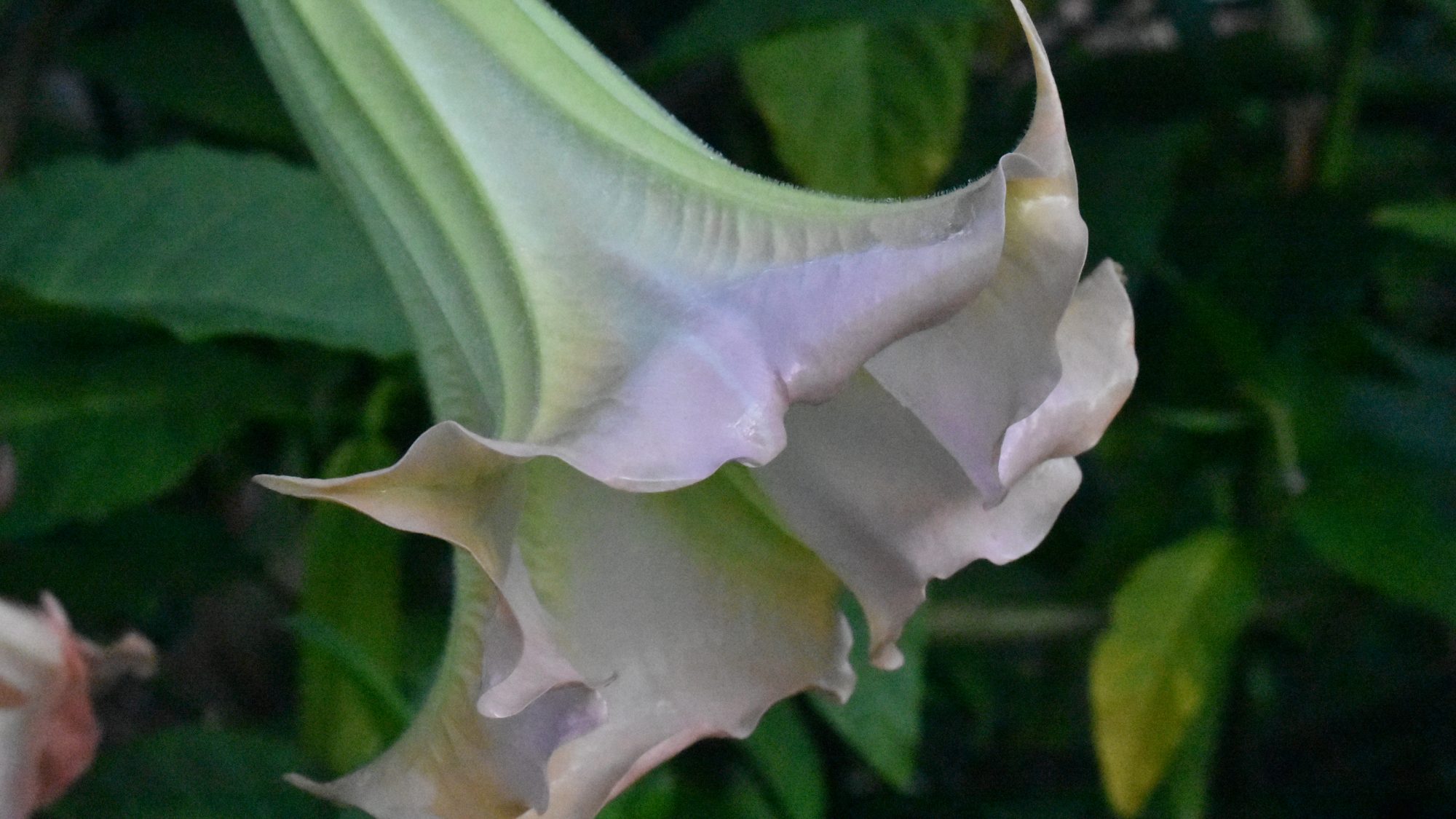This exotic-looking plant is showing late flower on the Systematic Beds.
The nightshade family (Solanaceae) has a global distribution, and contains approximately 100 genera and is estimated to have between 3,000 and 4,000 species. Members of the family can be woody, herbaceous or annual; have simple, alternate leaves; bear either a capsule or a berry; and have five-lobed flowers whose petals are often folded. The family contains several important food crops, such as potato, tomato, chilli and tobacco, and toxic species, such as the nightshades. The genus Brugmansia is a South American native, containing seven species. B. suaveolens occurs in Brazil where it grows in seasonally dry regions, and can grow as either a shrub or a tree, reaching up to 5m in height. It has long been used by native South Americans as a fodder crop, for medicinal purposes, and also as a poison. In the United Kingdom it will flower in the garden in a warm summer, producing a mass of slender, flared, trumpet-shaped flowers to 30cm in length, though requires frost protection in winter.

